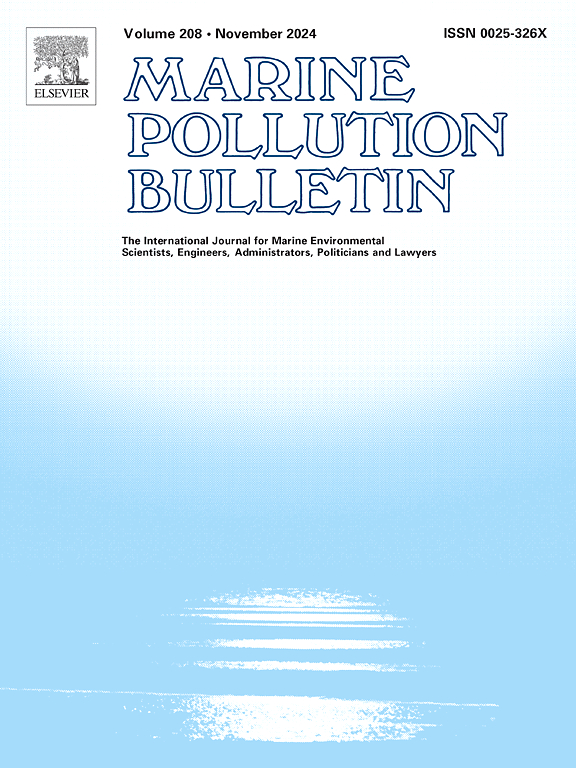Physiological responses of Gutweed Ulva intestinalis (Linnaeus, 1753) exposed to high-density polyethylene microplastics
IF 4.9
3区 环境科学与生态学
Q1 ENVIRONMENTAL SCIENCES
引用次数: 0
Abstract
Pollution by microplastics (MPs) in aquatic environments remains a global concern. Despite recent developments, there is a knowledge gap in the implications of MP pollution on autotrophic aquatic organisms such as macroalgae. The response of green macroalgae species, Ulva intestinalis to high-density polyethylene microplastics (HDPE-MPs) was investigated. Scanning Electron Microscopy (SEM) and Attenuated Total Reflectance – Fourier Transform Infrared (FT-IR) Spectroscopy showed adherence of HDPE-MPs onto surfaces of U. intestinalis. The following parameters were assessed: growth rate, chlorophyll content, and protein carbonyl content. The 14-day exposure assay entailed one control group (0 mg/L) and the HDPE-MP treated group (100 mg/L). The treatment of HDPE-MPs in U. intestinalis has a significant effect on the aforementioned parameters (p < 0.05). The treated group showed a lower growth rate (1.24 vs. 3.15 %) and chlorophyll content (0.705 vs. 0.911 mg/g), and higher protein carbonyl content (1.654 vs. 0.571 nmol DNPH/mg protein). These findings suggest that HDPE-MP exposure can negatively affect physiological processes in U. intestinalis. Subsequently, this study features the potentially adverse effects of MPs on autotrophic aquatic organisms.

高密度聚乙烯微塑料对肠肠草(Gutweed Ulva ninteinalis, Linnaeus, 1753)生理反应的影响
水生环境中的微塑料污染仍然是一个全球关注的问题。尽管最近取得了进展,但MP污染对自养水生生物(如大型藻类)的影响仍存在知识差距。研究了绿藻对高密度聚乙烯微塑料(HDPE-MPs)的响应。扫描电镜(SEM)和衰减全反射-傅里叶变换红外光谱(FT-IR)显示HDPE-MPs粘附在大肠杆菌表面。评估了以下参数:生长速率、叶绿素含量和蛋白质羰基含量。14天暴露试验包括一个对照组(0 mg/L)和HDPE-MP处理组(100 mg/L)。HDPE-MPs治疗对上述参数有显著影响(p <;0.05)。处理组生长速率(1.24% vs. 3.15%)和叶绿素含量(0.705 vs. 0.911 mg/g)较低,蛋白质羰基含量(1.654 vs. 0.571 nmol DNPH/mg protein)较高。这些发现表明,HDPE-MP暴露会对肠道菌的生理过程产生负面影响。随后,本研究的特点是MPs对自养水生生物的潜在不利影响。
本文章由计算机程序翻译,如有差异,请以英文原文为准。
求助全文
约1分钟内获得全文
求助全文
来源期刊

Marine pollution bulletin
环境科学-海洋与淡水生物学
CiteScore
10.20
自引率
15.50%
发文量
1077
审稿时长
68 days
期刊介绍:
Marine Pollution Bulletin is concerned with the rational use of maritime and marine resources in estuaries, the seas and oceans, as well as with documenting marine pollution and introducing new forms of measurement and analysis. A wide range of topics are discussed as news, comment, reviews and research reports, not only on effluent disposal and pollution control, but also on the management, economic aspects and protection of the marine environment in general.
 求助内容:
求助内容: 应助结果提醒方式:
应助结果提醒方式:


